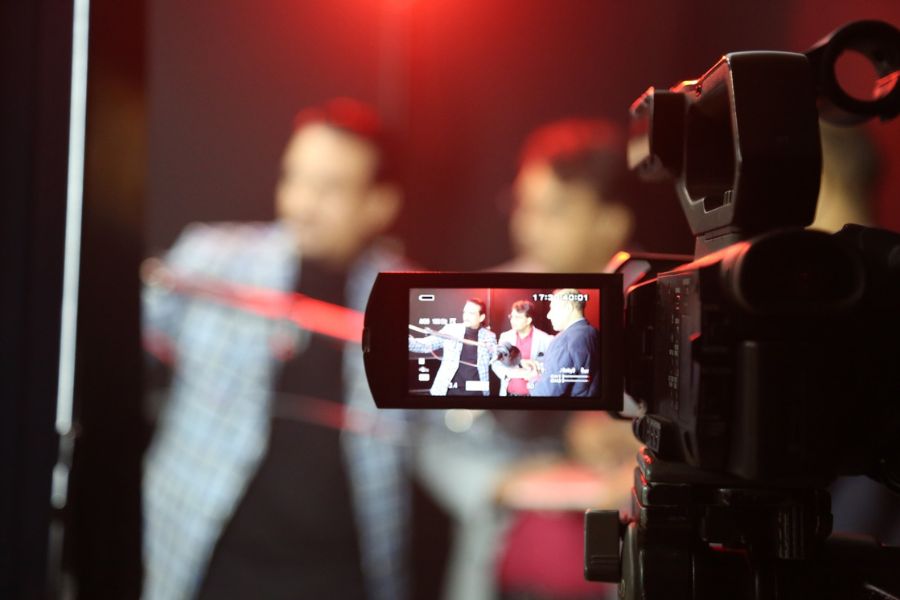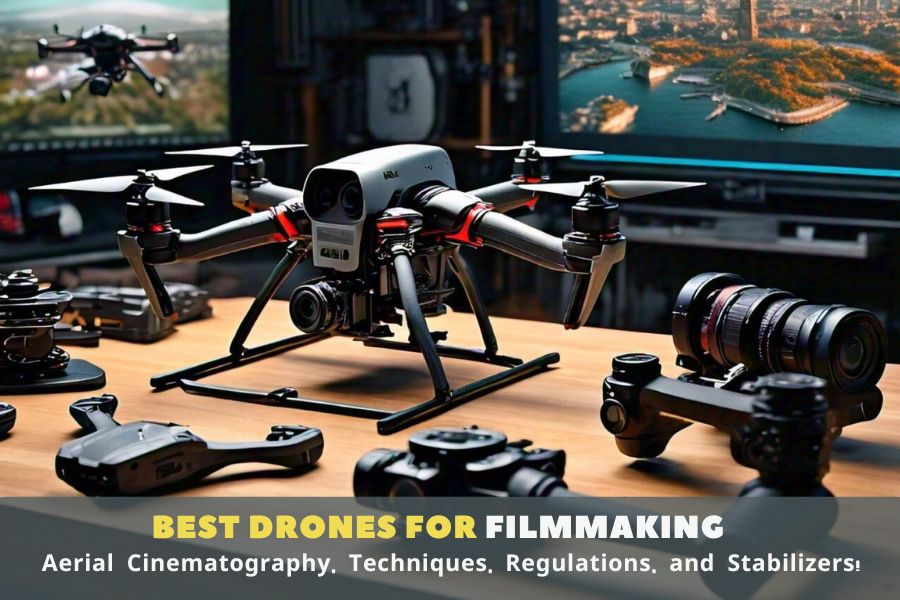Table of Contents
Introduction to Filmmaking with Drones
This is Ahmad Afridi, a filmmaker, understands the pivotal role drones play in modern cinematography. The ability to capture breathtaking aerial shots has revolutionized storytelling in films, commercials, and documentaries. As technology continues to advance, we will explore best drones for filmmaking, aerial cinematography, drone flight regulations, drone filming techniques, and drone gimbal stabilizers.
Best Drones for Filmmaking
When selecting a drone for filmmaking, several key features must be considered. From camera quality and flight time to stability and ease of use, I emphasize the importance of choosing a drone that meets specific filming needs. Best Drones for filmmaking such as DJI Inspire 2, DJI Phantom 4 Pro, and Freefly Alta X are renowned for their cinematic capabilities.
Drones:
DJI Inspire 2: This high-end drone is known for its professional video quality and interchangeable lenses, making it a good choice for serious filmmakers .
DJI Phantom 4 Pro: A popular choice for hobbyists and professionals alike, the Phantom 4 Pro offers excellent image quality, obstacle avoidance, and a long flight time.
Freefly Alta X: This powerful drone is designed for professional filmmakers who need top-of-the-line performance. It offers a modular design for customization and high-resolution filming capabilities.
Aerial Cinematography Techniques

I share valuable insights into capturing stunning aerial shots. By mastering aerial Cinematography techniques such as tracking shots, reveal shots, and establishing shots, filmmakers can add depth and emotion to their storytelling. Aerial-cinematography techniques opens up a world of creative possibilities, allowing filmmakers to showcase releam and action sequences like never before.
Tracking Shots: These shots involve following a subject or object as it moves through the scene. This technique creates a sense of movement and immersion, allowing viewers to feel like they’re alongside the subject. Imagine a tracking shot following a car racing through a winding mountain road.
Reveal Shots: These shots gradually unveil a scene or location, building anticipation and surprise. They are often used to create a sense of mystery or wonder. A reveal shot might start with a close-up of a flower bud, then slowly pan upwards to reveal a breathtaking landscape.
Establishing Shots: These shots set the scene and establish the context of the story, often showcasing the vastness of a landscape or cityscape. Establishing shots are crucial for helping viewers understand the world the characters inhabit. An establishing shot could open a movie by soaring high above a bustling city skyline.
Drone Flight Regulations
Understanding drone flight regulations is paramount for filmmakers. Navigating airspace restrictions, obtaining necessary permits, and prioritizing safety protocols are essential aspects of drone operations. I emphasize the need for filmmakers to stay informed and comply with local aviation laws to avoid legal complications.
Examples of Drone Flight Regulations:
Maintaining Visual Line of Sight (VLOS): This means you must always be able to see your drone with your own eyes, not through a screen or goggles.
Altitude Restrictions: Recreational drones typically have a maximum altitude limit of 400 feet (120 meters) above ground level.
Distance from People and Crowds: Keeping a safe distance from people and populated areas is crucial.
No-Fly Zones: Airports, government buildings, and other sensitive areas often have restrictions on drone flight.
Drone Filming Techniques
Incorporating drones into filmmaking requires creative vision and technical expertise. I explore innovative ways to use drones in various film genres, from capturing dynamic chase sequences to enhancing emotional moments with aerial perspectives. By integrating drone filming techniques seamlessly into film projects, filmmakers can elevate their storytelling and captivate audiences.
Camera Movements:

Panning: Similar to a tripod shot, but the drone allows for panning across vast landscapes or following a moving subject with a more dynamic feel.
Tilting: Tilting the camera up or down reveals a scene progressively, building anticipation or showcasing a subject’s grandeur.
Crane Shot: Mimicking a crane on set, the drone ascends or descends vertically, keeping the subject centered for a dramatic effect.
Orbit: Circling a subject creates a 360-degree view, emphasizing its scale and detail.
Shot Types:
Flyover: A classic drone shot that reveals the entirety of a landscape or location, establishing the scene’s scope.
Tracking Shot: Following a moving subject, like a car or person, from behind creates a sense of immersion and dynamism.
Reveal Shot: Starting low and tilting the camera upwards unveils a hidden scene or breathtaking vista, adding a touch of surprise.
Creative Applications:
Low-Angle Shots: Capture a subject from a dramatic perspective, making it appear powerful or imposing.
Following Animals: Get unique close-up shots of wildlife in their natural habitat without disturbing them.
Fast-Paced Action: Drones can film high-speed chases or stunts, adding an adrenaline rush to the scene.
Importance of Drone Gimbal Stabilizers
Drone Gimbal stabilizers play a crucial role in ensuring smooth and professional-looking drone footage. I discuss the significance of using quality gimbal stabilizers compatible with filmmaking drones. Models like DJI Ronin-S and Zhiyun Crane offer advanced stabilization features, allowing filmmakers to achieve cinematic results even in challenging environments.
Conclusion
My exploration of drones in filmmaking underscores their transformative impact on storytelling. By emphasizing drone selection (like the DJI Inspire 2, DJI Phantom 4 Pro, and Freefly Alta X), aerial cinematography techniques (tracking, reveal, and establishing shots), drone flight regulations (VLOS, altitude limits, no-fly zones), filming techniques (panning, tilting, orbits), and gimbal stabilizers (DJI Ronin-S, Zhiyun Crane), Afridi highlights the fusion of technical prowess and creative vision essential for captivating audiences and achieving professional-grade cinematic results. This comprehensive approach ensures filmmakers harness the full potential of drones while navigating safety and legal considerations, ultimately elevating their narratives through dynamic visuals and immersive storytelling.
FAQs
1. Are all drones suitable for filmmaking purposes?
Not all drones are ideal for filmmaking. Look for drones with high-quality cameras, stable flight performance, and filmmaking-specific features.
2. What are some common aerial cinematography techniques?
Tracking shots, reveal shots, and establishing shots are commonly used aerial-cinematography techniques to enhance storytelling.
3. Do filmmakers need to comply with drone flight regulations?
Yes, filmmakers must adhere to drone flight regulations to ensure safety, legality, and ethical drone use.
4. Why are gimbal stabilizers important for drone filmmaking?
Gimbal stabilizers help maintain smooth and stable footage, crucial for professional-looking drone cinematography.
5. How can filmmakers enhance drone footage creatively?
Filmmakers can experiment with different angles, movements, and framing techniques to add depth and emotion to drone footage.

